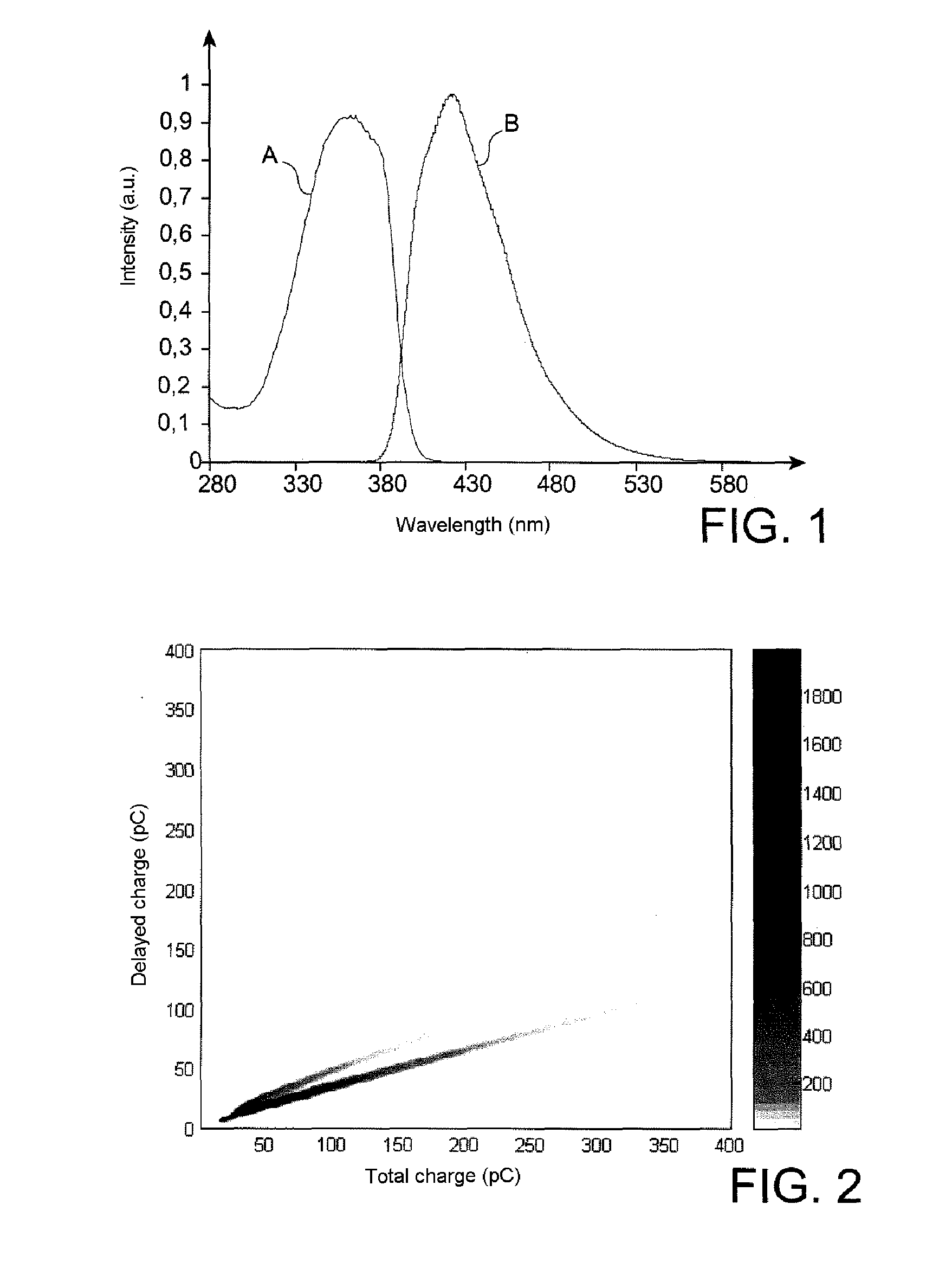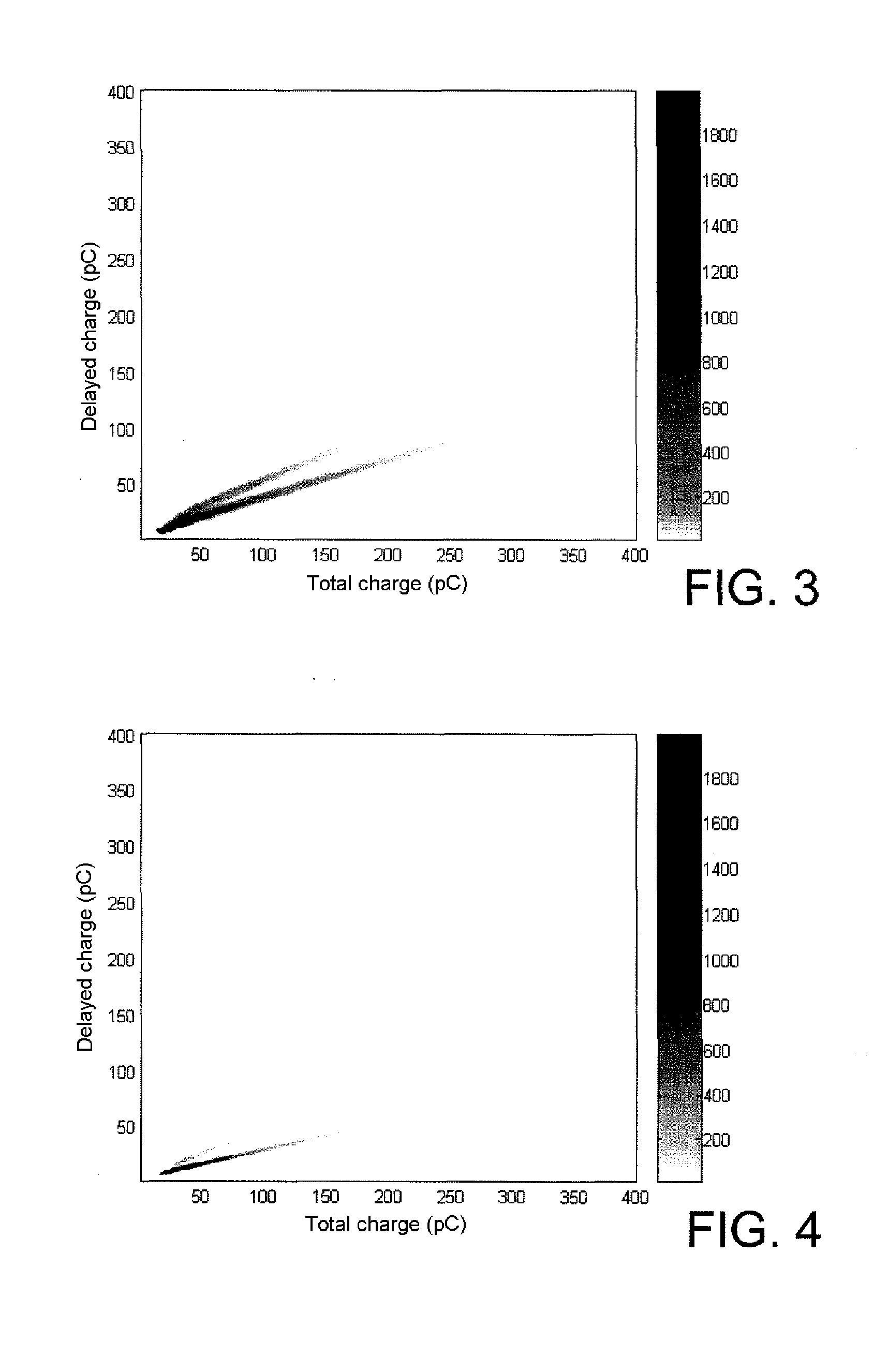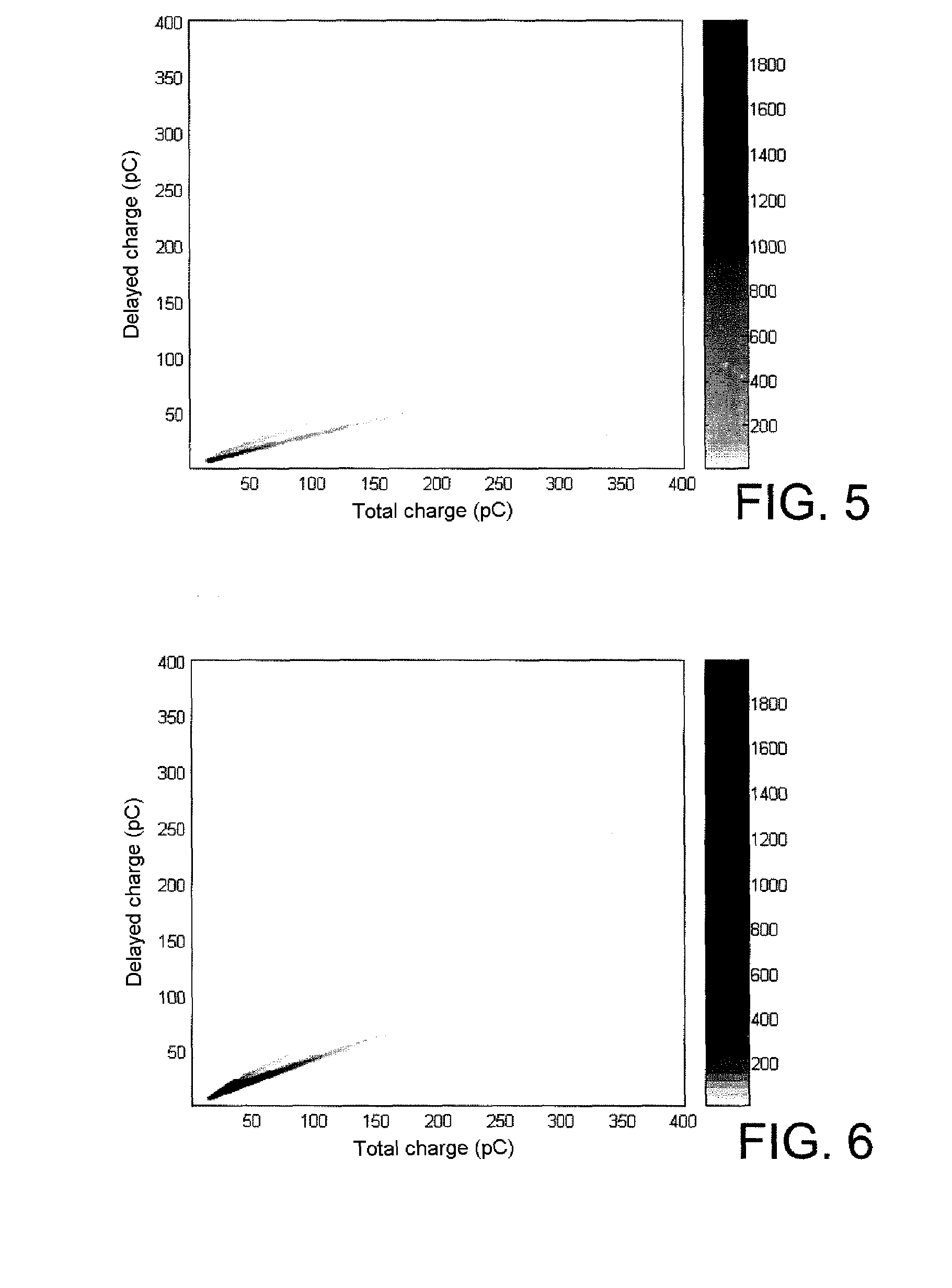1,8-naphthalimide derivatives as scintillation agents, in particular for discriminating between fast neutrons and gamma rays
a technology of naphthalimide derivatives and scintillators, which is applied in the field of 1, 8-naphthalimide derivatives as scintillators, can solve the problems of reducing fluorescence efficiency, poor ageing properties, and difficulty in preparing organic solid scintillators of large siz
- Summary
- Abstract
- Description
- Claims
- Application Information
AI Technical Summary
Benefits of technology
Problems solved by technology
Method used
Image
Examples
example 1
Synthesis of 1,8-naphthalimide derivatives useful as scintillation agents
1.1. N-(2′,5′-di(t-butyl)phenyl)-4-ethoxy-1,8-naphthalimide
[0108]The title compound, which corresponds to the derivative 4 represented above, is synthesized starting from 4-bromonaphthalic anhydride or compound 1 and from 2,5-di(t-butyl)aniline or compound 2, according to the following reaction scheme:
[0109]Compounds 1 and 2 are available commercially.
Synthesis of N-(2′,5′-di(t-butyl)phenyl)-4-bromo-1,8-naphthalimide or compound 3
[0110]2.934 g (10.06 mmol) of compound 1 and 4.131 g (20.12 mmol) of compound 2 are covered with 100 ml of freshly distilled quinoline in a 250 ml round-bottomed flask equipped with a water-cooled reflux condenser. 773 mg (3.52 mmol) of zinc acetate dihydrate are then added and the reaction mixture is heated at reflux of the solvent for 5 hours. After returning to ambient temperature, the mixture is poured into an aqueous solution of pH=1. The aqueous phase is extracted with dichlorome...
example 2
Properties of the Liquid Scintillators According to the Invention
[0156]2.1. Physical Properties
[0157]The performances of six liquid scintillators according to the invention were tested and compared with those of four commercial organic liquid scintillators.
[0158]The liquid scintillators according to the invention are composed of derivative 4 in solution at 10 g / l in m-xylene, toluene, mesitylene, benzene, p-xylene and p-isopropylbiphenyl respectively, while the commercial organic liquid scintillators are (1) a mixture of p-terphenyl and POPOP (1,4-di(5-phenyloxazol-2-yl)benzene) in a ratio of 4 at 0.1 g / l in toluene; (2) NE 213; (3) Ultima Gold® AB from PerkinElmer and (4) BC-501A from Bicron.
[0159]The instrumentation used is that described by S. Normand et al. in Nucl. Instrum. Methods Phys. Res. A 2002, 484, 342-350. It is n / γ discrimination by comparison of charges which is selected.
[0160]The photomultiplier is a Photonis XP2020 model which operates at a voltage of 2 kV.
[0161]The...
PUM
| Property | Measurement | Unit |
|---|---|---|
| emission wavelength | aaaaa | aaaaa |
| emission wavelength | aaaaa | aaaaa |
| concentration | aaaaa | aaaaa |
Abstract
Description
Claims
Application Information
 Login to View More
Login to View More - R&D
- Intellectual Property
- Life Sciences
- Materials
- Tech Scout
- Unparalleled Data Quality
- Higher Quality Content
- 60% Fewer Hallucinations
Browse by: Latest US Patents, China's latest patents, Technical Efficacy Thesaurus, Application Domain, Technology Topic, Popular Technical Reports.
© 2025 PatSnap. All rights reserved.Legal|Privacy policy|Modern Slavery Act Transparency Statement|Sitemap|About US| Contact US: help@patsnap.com



